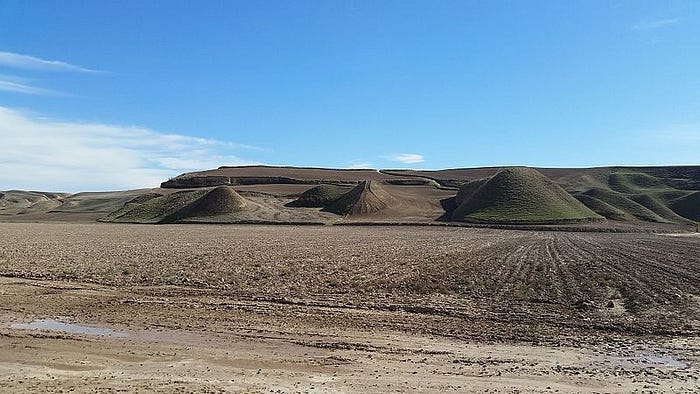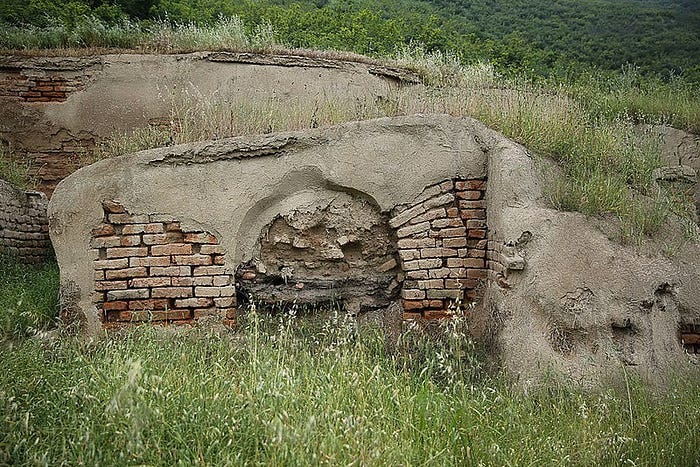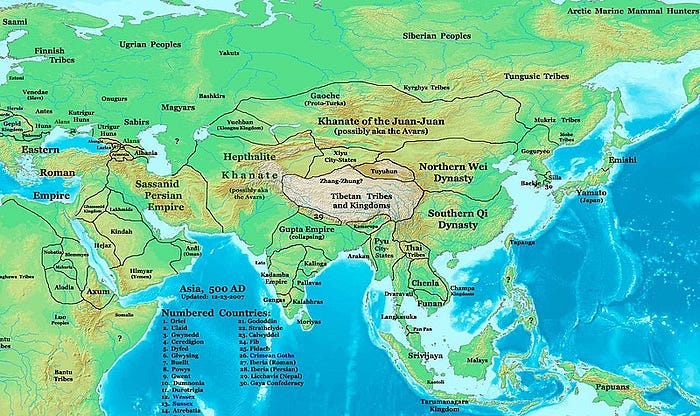It’s An Engineering Marvel Of The Ancient World But Is Mostly Unknown Today
This red snake is longer than two of the greatest Roman walls put together and reflects a fear of the civilized world

It’s hard not to notice, but people are afraid. As usual, it tends to be reflected in their entertainment choices. Zombies and dystopian futures are popular. And while this may be a fad, I think it hides something deeper.
Ever since humans have come together in civilized communities with laws, order, and standard methods of living, there’s an innate fear. Namely, what happens if it collapses? It’s a psychological terror of possible uncivilized chaos within our midst.
While we worry about riots in the streets and being without electricity, our ancestors worried about unknown people far from their civilized world. So much so, they built walls, and with good reason.
The ancient Mesopotamians feared the Umman-manda, or the “horde from who knows where.” These invaders threatened their civilization. While the Sea Peoples, an unknown group of seaborne raiders, are thought to be a contributing factor to the Bronze Age Collapse.
The Romans were no strangers to this fear too. They built Hadrian’s Wall, which stretches seventy-three miles across Britain, in addition to the Antonine Wall that’s over thirty-six miles across Scotland. Plus, the phrase beyond the pale derives from dangers outside of civilizations’ palisades.
But another great empire feared “uncivilized” invaders too. It pushed them to build a wall longer than the Antonine and Hadrian’s Wall combined. In fact, it might be one of the greatest achievements of the ancient world. Yet few know of it.
It’s the Great Gorgan Wall and is known today as “The Red Snake.”
The Wall

According to the UNESCO World Heritage Convention, the Great Gorgan Wall was built sometime between 400 and 500 AD, and is located in modern day Northern Iran. It stretches nearly one hundred twenty-four miles, although it may be longer. It’s believed part of the wall lays under the Caspian Sea.
While walls are nothing new in the ancient world, this one is more impressive by far due to its construction technique.
Current World Archeology (CWA) explains the land where the barrier was built had no timber or stone to use as material. So, the builders used brick “produced on an industrial scale” in uniform dimensions.
UNESCO believes two hundred million bricks were used, weighing over forty pounds each, and over three thousand kilns baked them.
It’s why the wall is referred to as “The Red Snake” due to the color of the brick which stretched for miles, standing about ten feet tall and thirty feet wide.
Amazing, but we’re missing something. Brick making itself is a bit of a process. You get a mixture of clay, water, and sand, then shape it into a mold, let it dry, and fire it in a kiln. But Northern Iran is semi-arid; therefore, the builders had little water.
CWA says a canal five meters deep was created near the wall, which was dug with a “continuous gradient, designed to ensure regular water flow.” So, the wall turned into a massive land and water management project.
It appears a large dam was created, along with “a series of at least five canals that then directed the water into the ditch on the north side of the Wall.” Furthermore, the ditch itself may have been where material for brick was extracted.

But the water also supported the soldiers guarding the wall. It’s believed about thirty thousand may have been posted along the structure between thirty-eight forts.
Obviously, the builders were powerful, organized, and incredible engineers, but who were they?
The Wall’s Builders

The Sassanid Empire existed between 224 and 651AD in the modern boundaries of Iran. They extolled their Persian roots and adopted Zoroastrianism as their state religion. The Byzantines were often an arch nemesis.
While Byzantium’s rulers and generals who lost battles to the Sassanids may have been thought inept, these modern Persians were often organized, strong, and ambitious. But they were also susceptible to raids.

The Hephthalites, or White Huns constantly threatened the northern frontier of the Sassanid Empire. Moreover, they were large and strong enough to be known by the Wei Dynasty, the Gupta Empire, and the Byzantines. These invaders even sat friendly monarchs on the Sassanid throne occasionally.
CWA says a Persian king named Peroz even died on campaign while fighting the Hephthalites.
So, a large military barrier, occupied by a significant army was likely a good investment for an Empire that was also jousting with a strong Byzantine neighbor. Furthermore, the Great Wall of Gorgan may have also linked up with other walls built by the Sassanid Empire.
But historian Peter Frankopan in The Silk Roads: A New History of the World, states the wall acted as a “physical barrier between the ordered world to the south and the chaos of the north.”
So, it was beyond a defensive tool for the Persians. Frankopan claims there’s evidence the Byzantines invested in the wall themselves, and even sent troops to man part of it. Therefore, the threat of uncivilized hordes attacking was so terrifying, it even pushed these usual enemies closer. Well, for a time.
Civilization’s Innate Psychological Terror
The wall appears to have served its purpose for about two hundred years. But no engineering project could save the Sassanid Empire. After continuous wars which tore down the strength of both the Byzantines and Persians, a new group of raiders from the desert appeared.
This group plundered but was centered around a religion. Soon they conquered this new Persian Empire, and eventually smashed down the walls of Constantinople. After time, they created their own empire and feared uncivilized raiders themselves.
Although the wall is a fascinating piece of history, and an engineering achievement of the ancient world, it’s a bit more. The Great Gorgan Wall shows us a bit of ourselves. As a civilized people we share in that hidden psychological terror within and will go to lengths to tame that fear.
Ultimately, it revolves around that one scary question: what happens if civilization collapses. To this day, it’s still our Umman-manda.
-Originally posted on Medium 6/6/23


